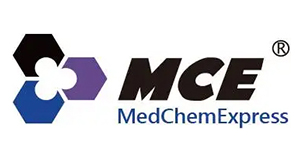Veratraldehyde, CAS 120-14-9
Veratraldehyde, CAS 120-14-9
SKU
MEXHY-N1096-250
Packaging Unit
250 g
Manufacturer
MedChemExpress
Availability:
loading...
Price is loading...
Product Description: Veratraldehyde is an orally active aromatic compound and antibacterial agent. Veratraldehyde can be isolated from essential oils of plants such as peppermint and ginger. Veratraldehyde targets the PilY1 protein. Veratraldehyde has antibacterial activity against Pseudomonas aeruginosa. Veratraldehyde has a repellent effect against mosquitoes and ticks. Veratraldehyde can be used as a flavoring agent[1][2][3][4][5][6][7].
Formula: C9H10O3
References: [1]Wahyuningsih T D, et al. Green synthesis of some novel dioxolane compounds from Indonesian essential oils as potential biogreases[C]//AIP Conference Proceedings. AIP Publishing, 2017, 1823(1). /[2]Han D, et al. Bacterial biotransformation of phenylpropanoid compounds for producing flavor and fragrance compounds. Journal of the Korean Society for Applied Biological Chemistry, 2013, 56: 125-133. /[3]Bourbonnais R, et al. Electrochemical analysis of the interactions of laccase mediators with lignin model compounds. Biochim Biophys Acta. 1998 Mar 2;1379(3):381-90. /[4]Bisen M, et al. Veratraldehyde Inhibits Motility Phenotypes and Targets Biofilm Formation of Pseudomonas aeruginosa: Insights From Computational and Experimental Studies. Chem Biodivers. 2025 May 30:e00074. /[5]Guillén F, et al. Anisaldehyde and Veratraldehyde Acting as Redox Cycling Agents for H(2)O(2) Production by Pleurotus eryngii. Appl Environ Microbiol. 1994 Aug;60(8):2811-7. /[6]Kim S I, et al. Repellency of veratraldehyde (3, 4-dimethoxy benzaldehyde) against mosquito females and tick nymphs. Applied Sciences, 2021, 11(11): 4861./[7]Huh HW, et al. Bioanalytical Method Development and Validation of Veratraldehyde and Its Metabolite Veratric Acid in Rat Plasma: An Application for a Pharmacokinetic Study. Molecules. 2020 Jun 17;25(12):2800.
CAS Number: 120-14-9
Molecular Weight: 166.18
Compound Purity: 99.95
Research Area: Infection
Solubility: DMSO : 100 mg/mL (ultrasonic)
Target: Bacterial;Parasite
Formula: C9H10O3
References: [1]Wahyuningsih T D, et al. Green synthesis of some novel dioxolane compounds from Indonesian essential oils as potential biogreases[C]//AIP Conference Proceedings. AIP Publishing, 2017, 1823(1). /[2]Han D, et al. Bacterial biotransformation of phenylpropanoid compounds for producing flavor and fragrance compounds. Journal of the Korean Society for Applied Biological Chemistry, 2013, 56: 125-133. /[3]Bourbonnais R, et al. Electrochemical analysis of the interactions of laccase mediators with lignin model compounds. Biochim Biophys Acta. 1998 Mar 2;1379(3):381-90. /[4]Bisen M, et al. Veratraldehyde Inhibits Motility Phenotypes and Targets Biofilm Formation of Pseudomonas aeruginosa: Insights From Computational and Experimental Studies. Chem Biodivers. 2025 May 30:e00074. /[5]Guillén F, et al. Anisaldehyde and Veratraldehyde Acting as Redox Cycling Agents for H(2)O(2) Production by Pleurotus eryngii. Appl Environ Microbiol. 1994 Aug;60(8):2811-7. /[6]Kim S I, et al. Repellency of veratraldehyde (3, 4-dimethoxy benzaldehyde) against mosquito females and tick nymphs. Applied Sciences, 2021, 11(11): 4861./[7]Huh HW, et al. Bioanalytical Method Development and Validation of Veratraldehyde and Its Metabolite Veratric Acid in Rat Plasma: An Application for a Pharmacokinetic Study. Molecules. 2020 Jun 17;25(12):2800.
CAS Number: 120-14-9
Molecular Weight: 166.18
Compound Purity: 99.95
Research Area: Infection
Solubility: DMSO : 100 mg/mL (ultrasonic)
Target: Bacterial;Parasite
| SKU | MEXHY-N1096-250 |
|---|---|
| Manufacturer | MedChemExpress |
| Manufacturer SKU | HY-N1096-250 |
| Package Unit | 250 g |
| Quantity Unit | STK |
| Product information (PDF) |
|
| MSDS (PDF) |
|

 Deutsch
Deutsch










